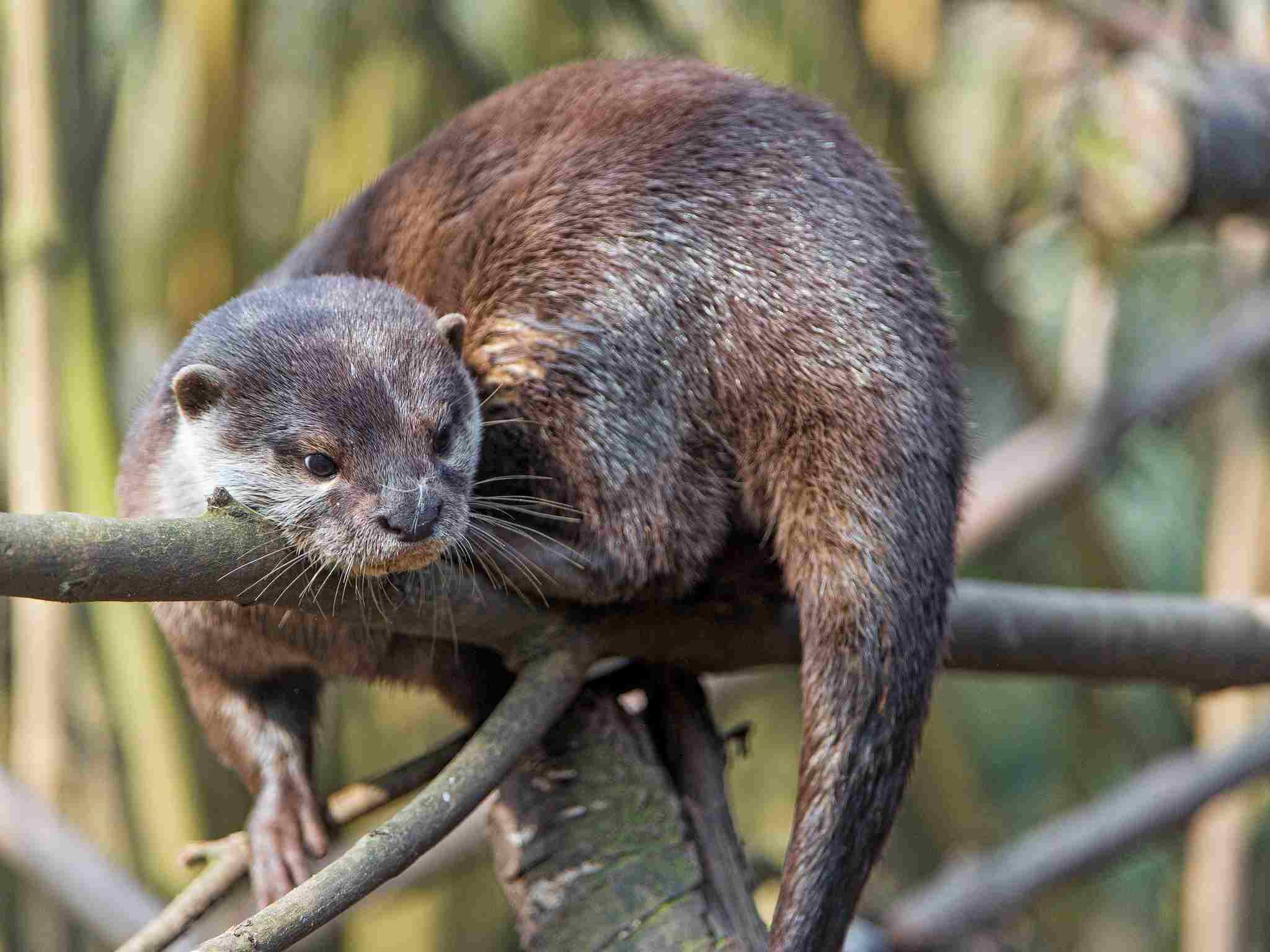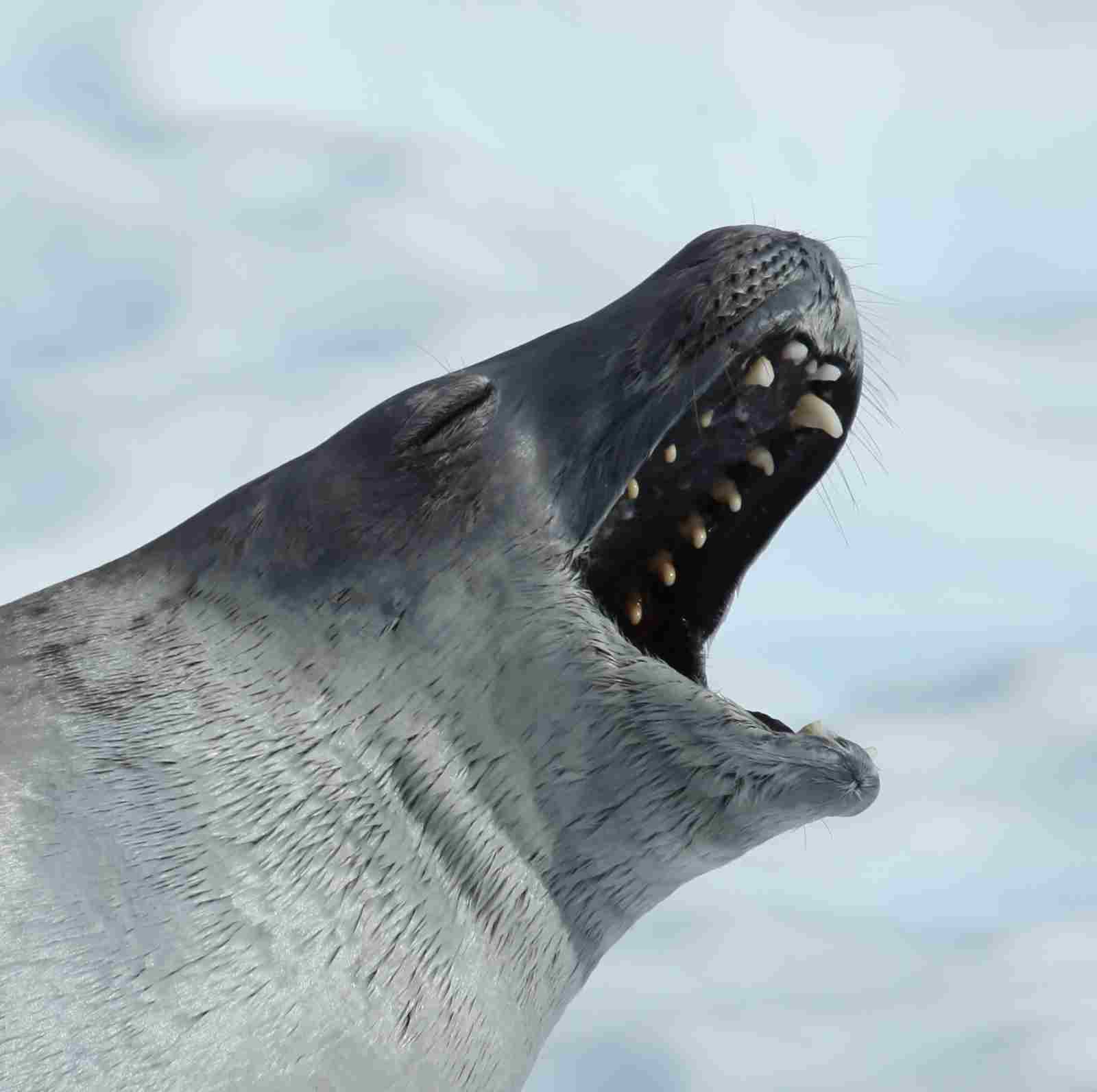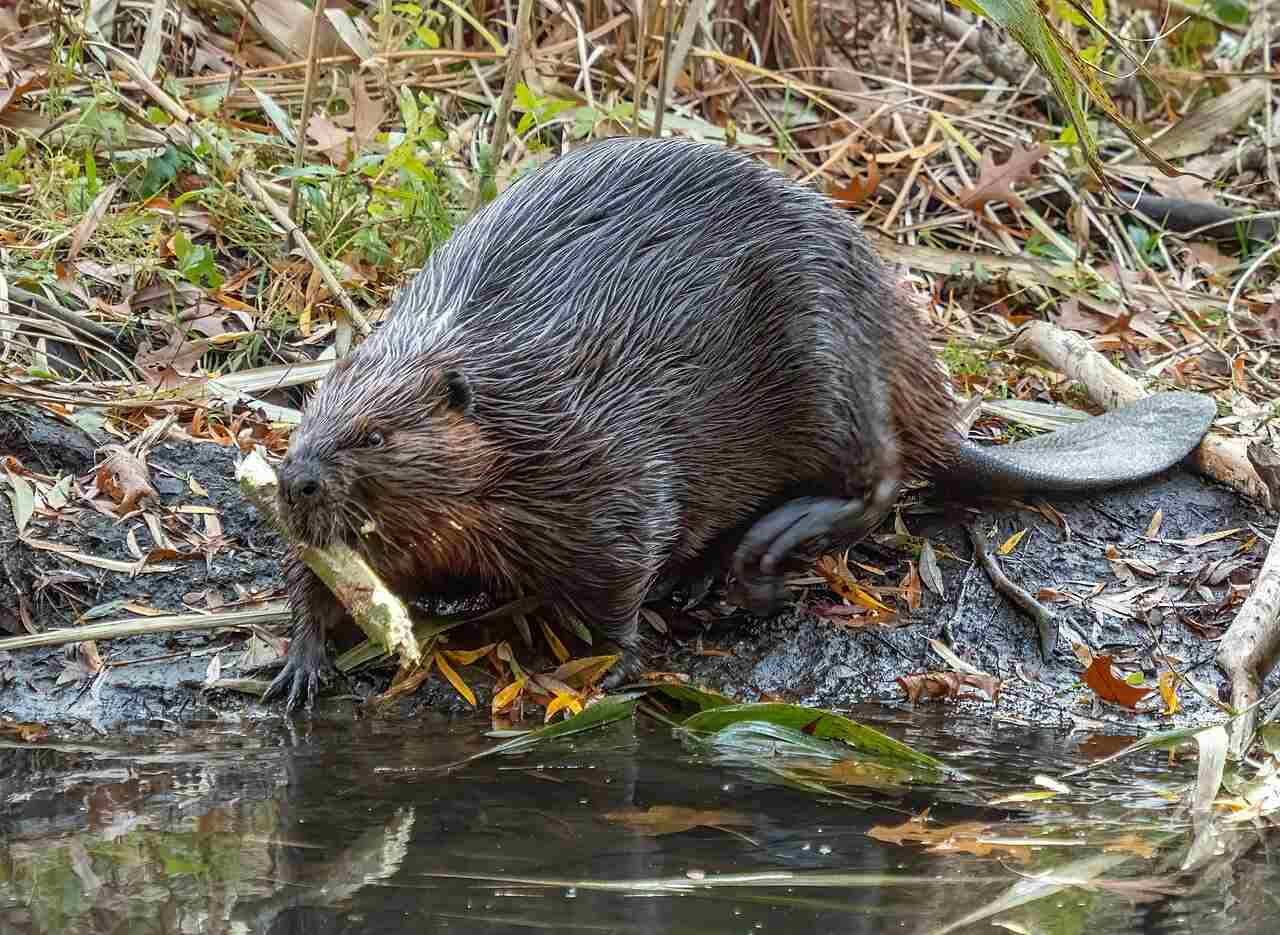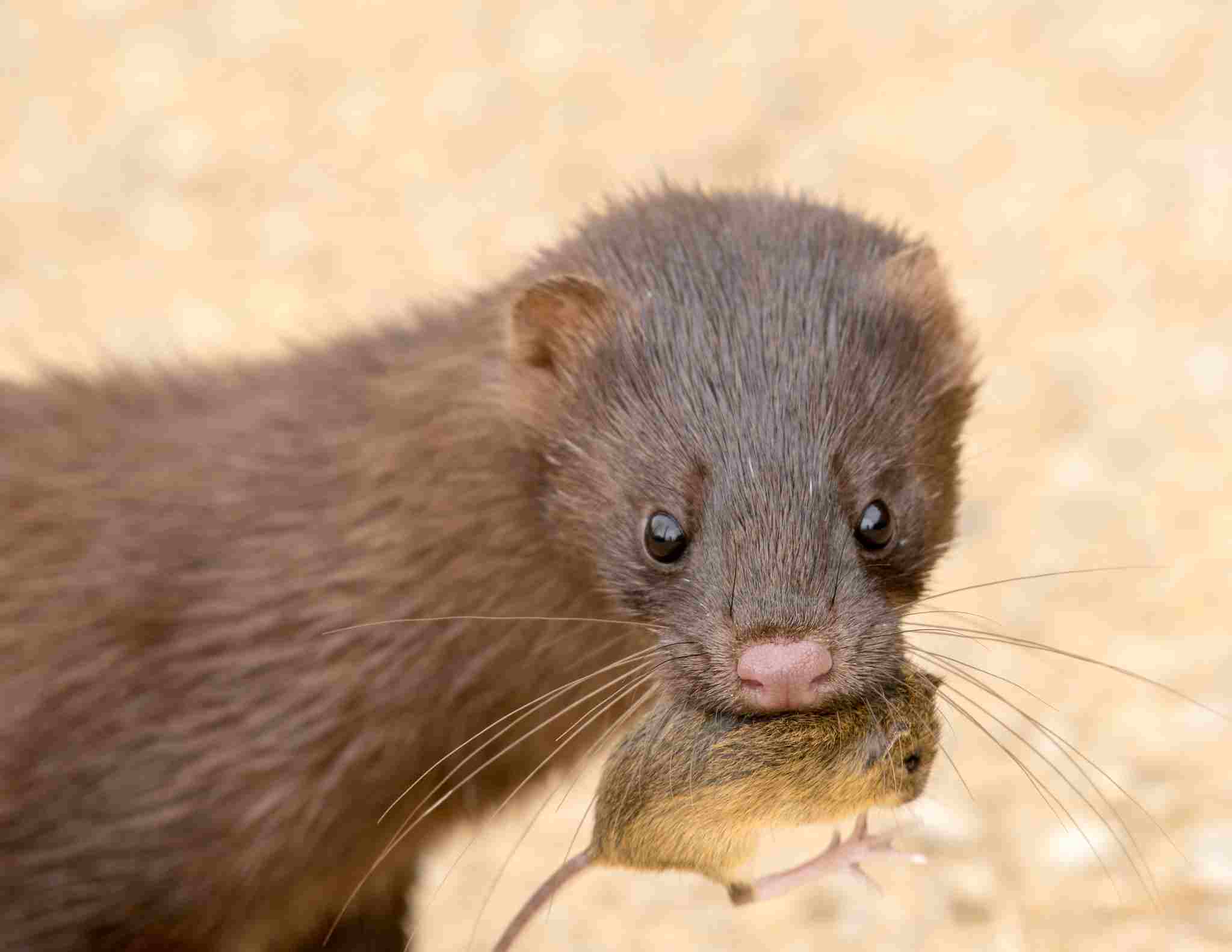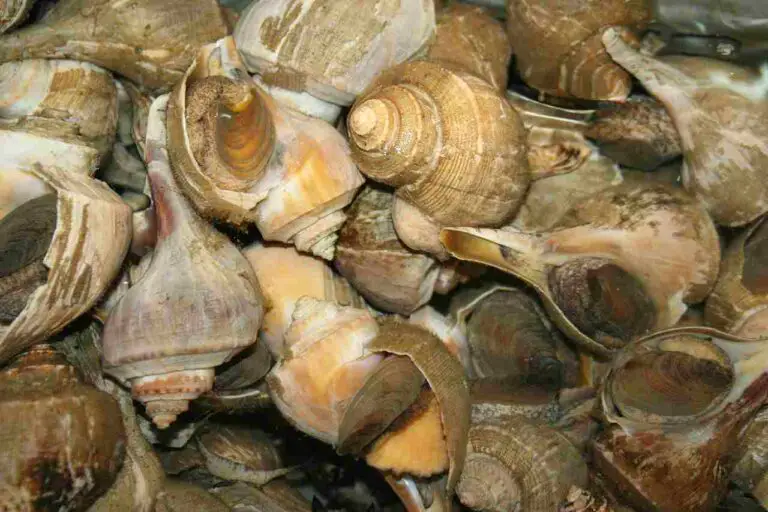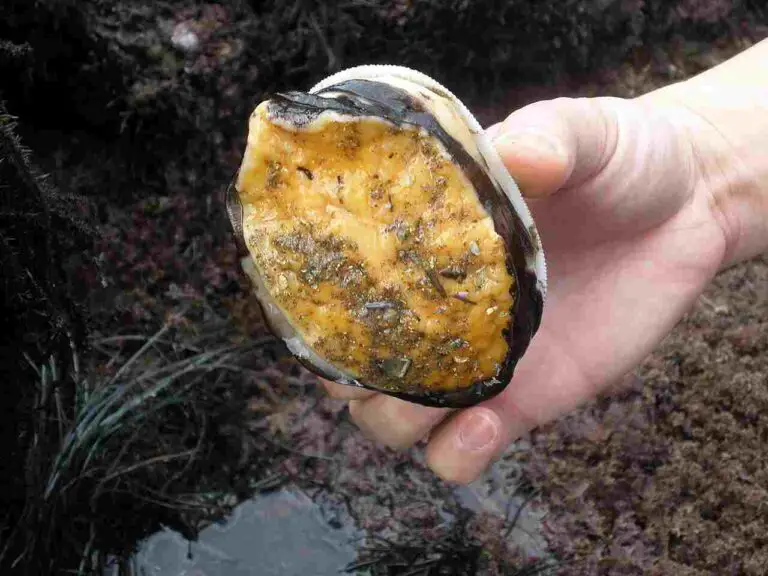River Otter Vs Sea Otter Size, Weight, Overall Comparison
In an imagined encounter between a river otter and a sea otter, two distinct members of the Mustelidae family adapted to different aquatic environments, we explore the potential dynamics of this confrontation. Sea otters, significantly larger than river otters, exhibit differences in tail morphology, fur characteristics, and swimming patterns. This analysis aims to highlight these distinctions and assert that, in a fight, sea otters would likely emerge victorious due to their substantial size, weight, and strength advantages, although river otters can display aggressiveness if threatened.
River Otter vs Sea Otter: Assessing the Likely Victor in a Confrontation
In a hypothetical scenario involving a river otter and a sea otter, both members of the Mustelidae family with adaptations to distinct aquatic environments, the outcome of a fight is shaped by differences in size, tail morphology, fur characteristics, and swimming patterns. While river otters may exhibit aggression when threatened, sea otters’ larger size and strength are likely to be determining factors in the confrontation.
I). Size, Tail Morphology, and Fur Characteristics Differences:
– Sea otters are much larger than river otters, with some sea otters weighing over 45 kg, while river otters typically weigh between 5 to 14 kg. Sea otters also have a distinct tail morphology, being more robust and broader than the sleeker tail of river otters. Fur characteristics also vary, with sea otters possessing dense fur to insulate against cold waters.
II). Sea Otter’s Size, Weight, and Strength Advantage:
– In a hypothetical fight, sea otters would likely win against river otters due to their substantial size, weight, and strength advantages. The larger build of sea otters provides enhanced physical capabilities, potentially making them more formidable in a physical confrontation.

III). River Otter’s Aggressiveness:
– While river otters can be aggressive if threatened, their smaller size puts them at a disadvantage against sea otters. The aggressiveness of river otters may serve as a defensive mechanism, but overcoming the size and strength of sea otters could prove challenging.
IV). Potential Strategies of the River Otter:
– River otters, known for their agility and aggressiveness, may employ defensive maneuvers if confronted by a sea otter. However, the sea otter’s size advantage may limit the effectiveness of these strategies, and the overall dynamics could favor the larger sea otter.
V). Overall Dynamics:
– In this hypothetical scenario, sea otters are likely to emerge as the victors in a fight against river otters due to their significantly larger size, greater weight, and increased strength. While river otters may display aggressiveness when threatened, the overall dynamics favor the sea otter in this hypothetical confrontation.
*Details of Comparison
| Criteria | River Otter | Sea Otter |
| Taxonomy | Genus: Lontra or Lutra | Genus: Enhydra |
| Appearance | Sleek, elongated body; webbed feet |
Stocky, round face; small external ears; webbed feet
|
| Size | Smaller | Larger |
| Weight | Lighter | Heavier |
| Bite Force (PSI) | Estimated to be around 450 PSI | Generally lower |
| Physical Offensive Advantages | Sharp claws, strong jaws, agile |
Powerful forelimbs, dexterous paws, tool use
|
| Physical Defensive Advantages | Speed, agility, hiding in burrows |
Thick fur, group behavior, avoidance
|
| Speed | Faster swimmers | Slower in water |
| Agility | Agile on land and in water |
Agile in water, manipulative with tools
|
| Overall Physical Capacity | Versatile in various environments |
Specialized for marine life
|
| Habitat Preference(s) | Freshwater and coastal areas |
Coastal marine environments
|
| Tracks | Webbed footprints, visible tail drag marks |
Difficult to observe tracks in water
|
| Lifespan | Typically 8-9 years in the wild |
Up to 15-20 years in the wild
|
| Mode of Feeding | Carnivorous, hunt in water and on land |
Specialized marine diet, use tools for shellfish
|
| Intelligence | Considered intelligent, problem-solving abilities |
Highly intelligent, tool use, social learning
|
| Social Behavior | Generally more solitary, family groups may form |
Often found in social groups (rafts), vocalizations
|
| Mode of Reproduction | Mating throughout the year |
Mating in water, births year-round, longer gestation
|
| Parental Behavior | Female raises offspring alone, young stay for about a year |
Females primary caregivers, form social groups
|
| Proximity to Human-Inhabited Areas | Tolerant, can adapt to urban areas |
Generally avoids human-populated areas
|
| Behavior Toward Humans | Generally cautious, can become habituated |
Wary of humans, may retreat or dive when approached
|
| Danger Posed to Humans | Rarely pose a threat, may bite if threatened |
Not aggressive, but may defend if provoked
|
| Associated Precautions | Avoid feeding, secure garbage |
Maintain safe distance, follow wildlife viewing guidelines
|
| Conservation Status | Varies, some face threats due to habitat degradation |
Generally endangered/threatened, vulnerable to oil spills
|
| Conclusion | Both share common traits but differ significantly |
Sea otters face higher conservation risk
|
Key Points
- Sea otters are generally larger and heavier than river otters.
- River otters may have a stronger bite force.
- River otters are faster swimmers.
- Sea otters are more social and exhibit complex behaviors, including tool use.
- River otters have a shorter lifespan compared to sea otters.
- Sea otters are specialized for marine life, while river otters are versatile in various environments.
- River otters are more adaptable to human presence.
- Sea otters generally face a higher conservation risk.
1. Taxonomy:
River Otter:
Kingdom: Animalia
Phylum: Chordata
Class: Mammalia
Order: Carnivora
Family: Mustelidae
Genus: Lontra or Lutra (species-dependent)
Species: Various species, such as Lontra canadensis (North American river otter)
Sea Otter:
Kingdom: Animalia
Phylum: Chordata
Class: Mammalia
Order: Carnivora
Family: Mustelidae
Genus: Enhydra
Species: Enhydra lutris
2. Appearance:

River Otter:
Sleek, streamlined body with a long, cylindrical tail.
Thick, water-resistant fur, often brown with a lighter underside.
Webbed feet for efficient swimming.
Ears and nostrils close while underwater.
Sea Otter:
Stocky build with a round face and small, furry external ears.
Dense, waterproof fur that can range from brown to almost black.
Short legs with partially webbed feet, facilitating swimming.
Flatter tail compared to river otters.
Comparison:
Both otters share adaptations for aquatic life, including fur for insulation and streamlined bodies for swimming.
River otters tend to have a more elongated body, while sea otters have a rounder appearance.
Ecological Implications:
Adaptations in appearance reflect their respective habitats, with river otters often found in freshwater ecosystems and sea otters in coastal marine environments.
3. Size:
River Otter:
Length: 2.5 to 3.3 feet (0.75 to 1 meter).
Tail length: 12 to 18 inches (30 to 45 cm).
Sea Otter:
Length: 3 to 4.5 feet (0.9 to 1.4 meters).
Tail length: 10 to 14 inches (25 to 36 cm).
Comparison:
Sea otters are generally larger than river otters in both body and tail length.
Ecological Implications:
Size differences may correlate with the availability and size of prey in their respective habitats.
4. Weight:
River Otter:
Range: 10 to 30 pounds (4.5 to 13.6 kg).
Sea Otter:
Range: 30 to 100 pounds (13.6 to 45.4 kg).
Comparison:
Sea otters are significantly heavier than river otters.
Ecological Implications:
Weight differences impact the energy requirements, foraging strategies, and ecological roles of these otters in their habitats.
5. Bite Force (PSI – Pounds per Square Inch):
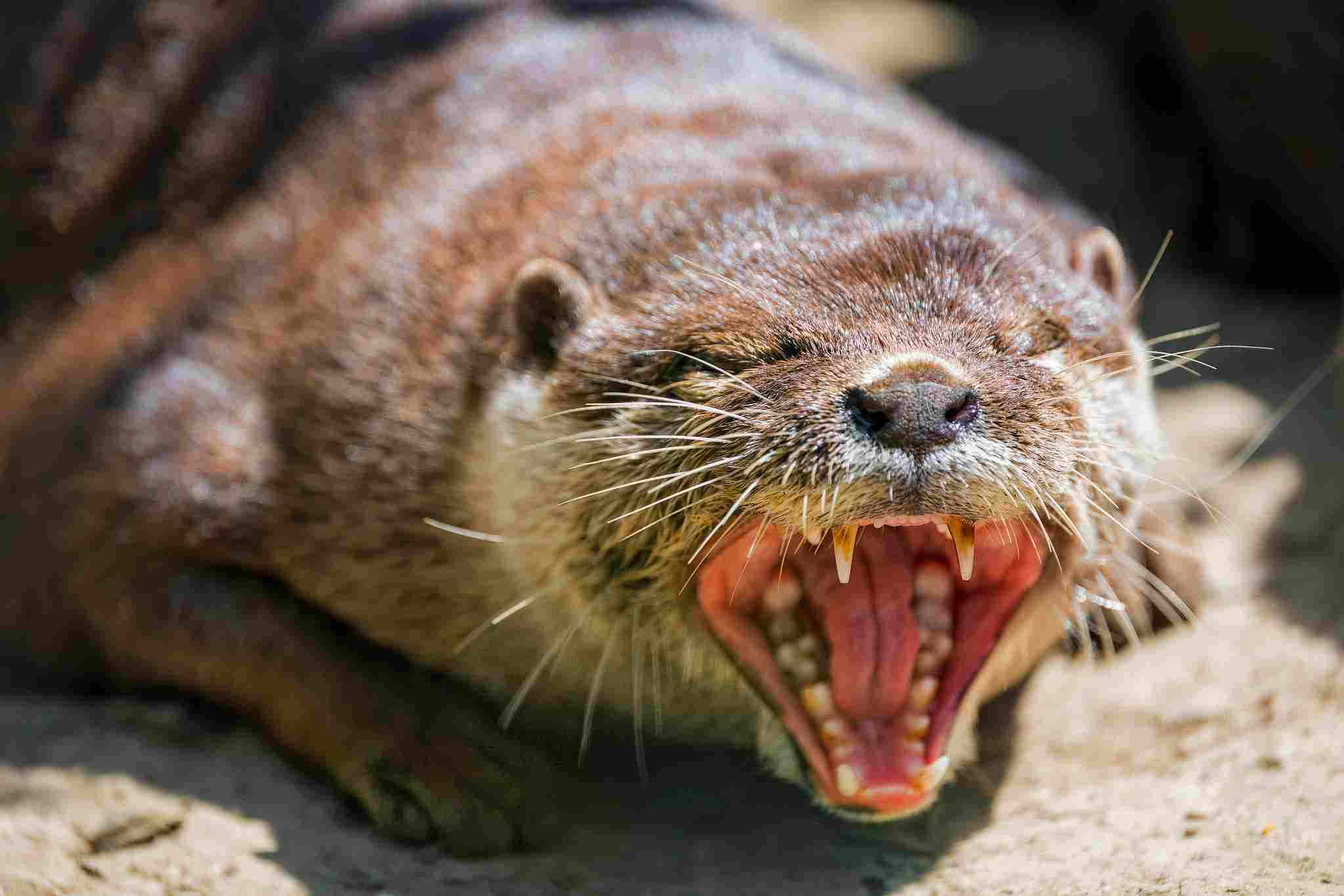
River Otter: Information on bite force is limited but estimated to be around 450 PSI.
Sea Otter: Information on bite force is limited, but it is generally considered lower than that of river otters.
Comparison:
River otters may have a stronger bite force compared to sea otters.
Ecological Implications:
Bite force relates to hunting and feeding behaviors, influencing the otters’ roles in their ecosystems.
6. Physical Offensive Advantages:
River Otter:
Sharp claws and strong jaws for catching and consuming prey.
Agile movements on land and in water.
Sea Otter:
Powerful forelimbs and dexterous paws for manipulating and capturing prey.
Use of tools, such as rocks, to crack open shellfish.
Comparison:
Both otters exhibit effective offensive adaptations for hunting in their specific environments.
Ecological Implications:
These adaptations contribute to the otters’ roles as predators, influencing prey populations in their habitats.
7. Physical Defensive Advantages:
River Otter:
Speed and agility to escape predators.
Ability to hide in underwater burrows or dense vegetation.
Sea Otter:
Thick fur provides insulation and some protection against predators.
Group behavior, as sea otters often form rafts for mutual protection.
Comparison:
River otters rely on speed and agility, while sea otters employ group strategies for defense.
Ecological Implications:
Defensive adaptations impact predator-prey dynamics and overall ecological balance in their respective habitats.
8. Speed (Km/hour or Mile/hour):

River Otter: Capable of reaching speeds up to 8-10 mph (13-16 km/h) in water.
Sea Otter: Slower in water, with a cruising speed of around 2 mph (3.2 km/h).
Comparison:
River otters are generally faster swimmers than sea otters.
Ecological Implications:
Speed affects hunting success and evasion of predators, shaping the otters’ ecological roles.
9. Agility:
River Otter: Highly agile on land and in water, capable of making quick turns and maneuvers.
Sea Otter: Agile in water, demonstrating dexterity in manipulating objects and capturing prey.
Comparison:
Both otters showcase remarkable agility, but the specific adaptations differ based on their habitats.
Ecological Implications:
Agility contributes to successful foraging and evasion of predators, influencing ecosystem dynamics.
10. Overall Physical Capacity:
River Otter:
Well-adapted for both terrestrial and aquatic environments.
Efficient swimmers with streamlined bodies and webbed feet.
Versatile hunters with strong jaws and sharp claws.
Sea Otter:
Specialized for marine life, with adaptations like dense fur for insulation.
Skilled divers capable of navigating and foraging in coastal ecosystems.
Use of tools for manipulating and obtaining food.
Comparison:
While both otters exhibit high physical capacity, river otters are versatile in various environments, while sea otters are specialized for marine life.
Ecological Implications:
Their overall physical capacity influences their ecological roles and impact on ecosystems.
11. Habitat Preference(s):
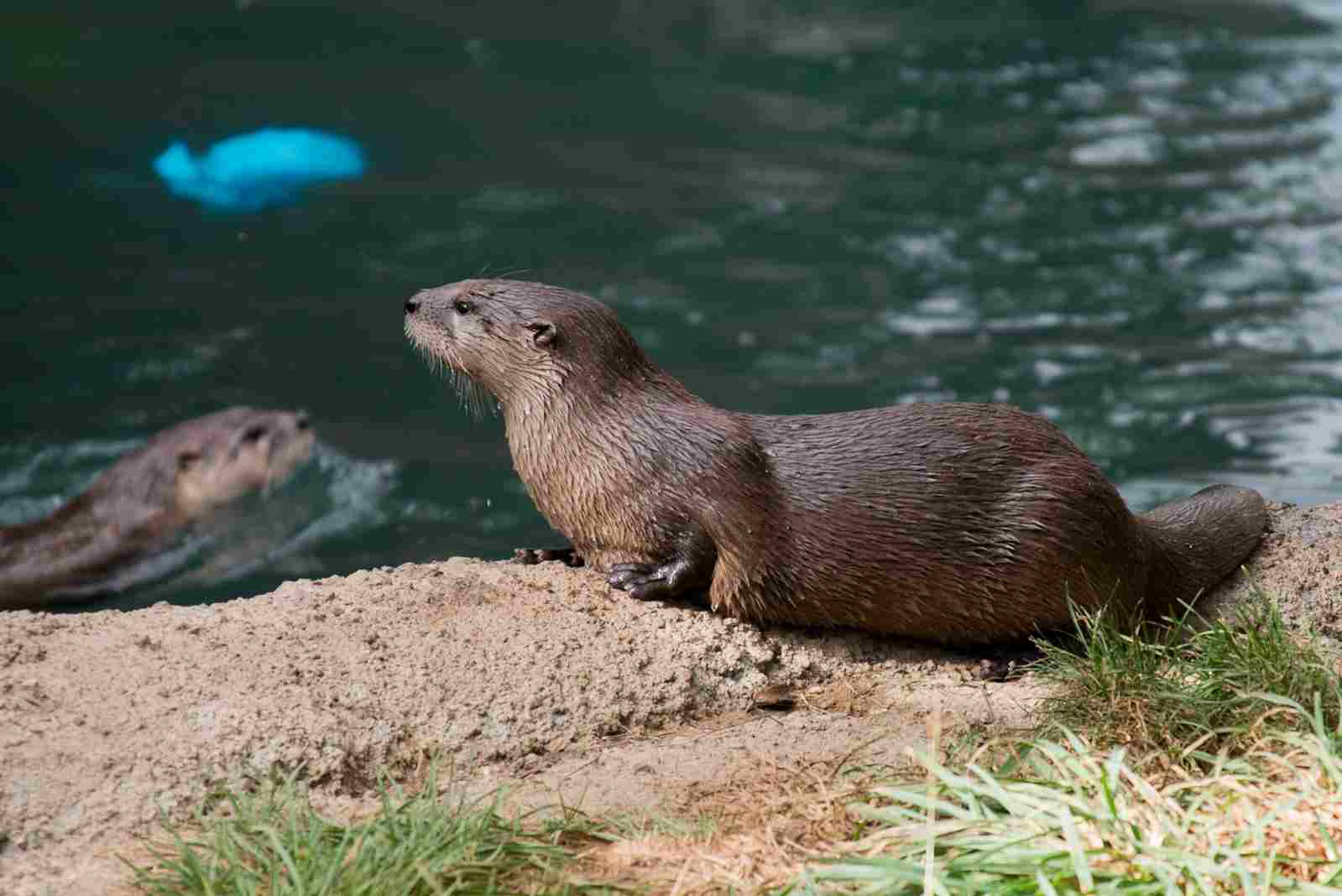
River Otter:
Freshwater habitats like rivers, lakes, and ponds.
Also found in coastal areas.
Sea Otter:
Coastal marine environments, including kelp forests and estuaries.
Comparison:
River otters are more adaptable to freshwater and coastal areas, while sea otters are exclusively marine.
Ecological Implications:
Habitat preferences dictate the ecosystems they inhabit and influence local biodiversity.
12. Tracks:
River Otter:
Webbed footprints on soft ground, distinctive claw marks.
Tail drag marks may be visible.
Sea Otter:
Difficult to observe tracks as sea otters spend much of their time in water.
Comparison:
Tracking river otters is more feasible due to their terrestrial activities.
Ecological Implications:
Tracking provides insights into their movement patterns and habitat use.
13. Lifespan:
River Otter:
Typically 8 to 9 years in the wild.
Sea Otter:
Can live up to 15 to 20 years in the wild.
Comparison:
Sea otters generally have a longer lifespan than river otters.
Ecological Implications:
Lifespan influences population dynamics and resilience of otter populations in their ecosystems.
14. Mode of Feeding:
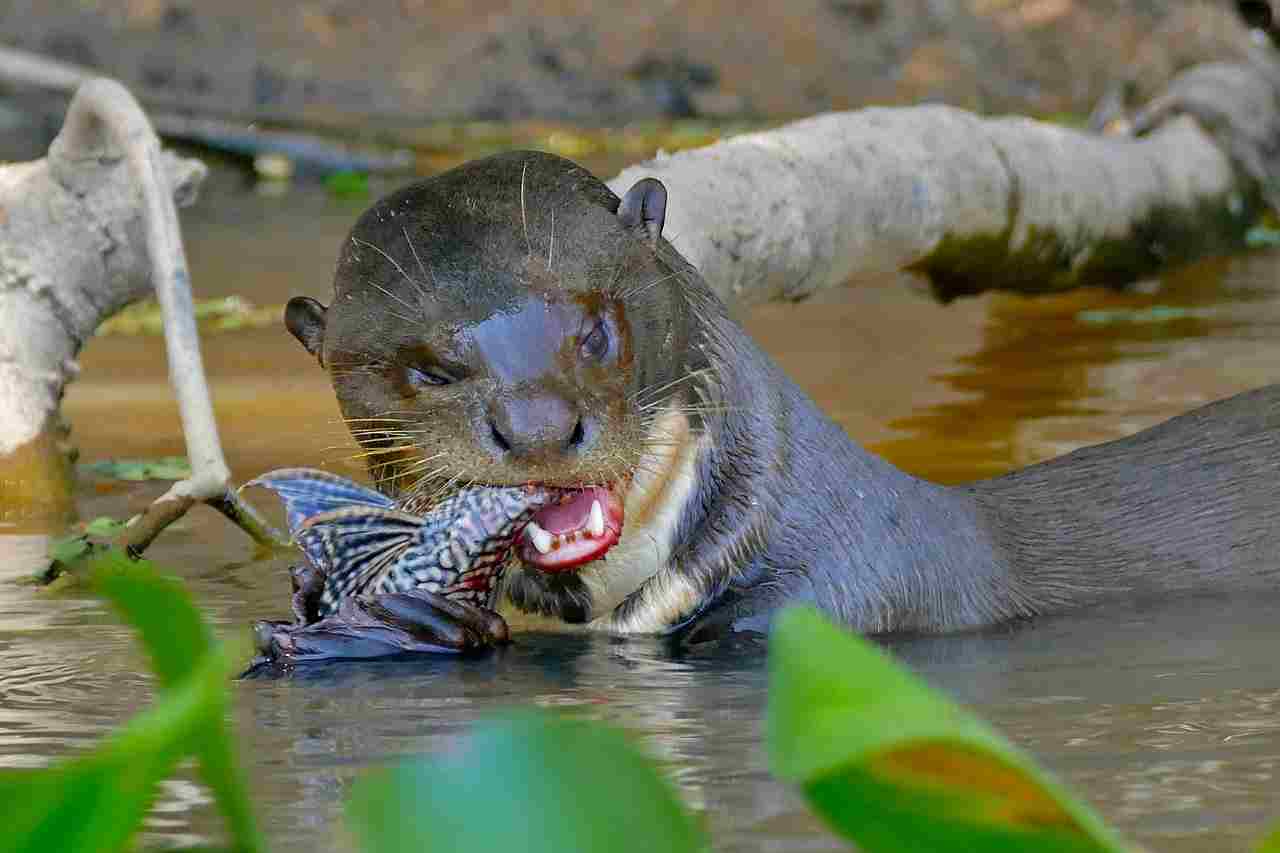
River Otter:
Carnivorous diet, primarily fish, amphibians, and crustaceans.
Hunt both in water and on land.
Sea Otter:
Specialized in marine diet, including sea urchins, crabs, and various shellfish.
Use tools like rocks to open shellfish.
Comparison:
Both otters are carnivorous, but their specific prey and hunting techniques vary.
Ecological Implications:
Their feeding habits influence the structure of local aquatic communities.
15. Intelligence:
River Otter:
Considered intelligent, with problem-solving abilities.
Exhibit playful behaviors.
Sea Otter:
Known for their high level of intelligence, tool use, and social learning.
Complex foraging behaviors.
Comparison:
Sea otters are often regarded as more intelligent, particularly in terms of tool use.
Ecological Implications:
Intelligence contributes to their ability to adapt to changing environmental conditions.
16. Social Behavior:
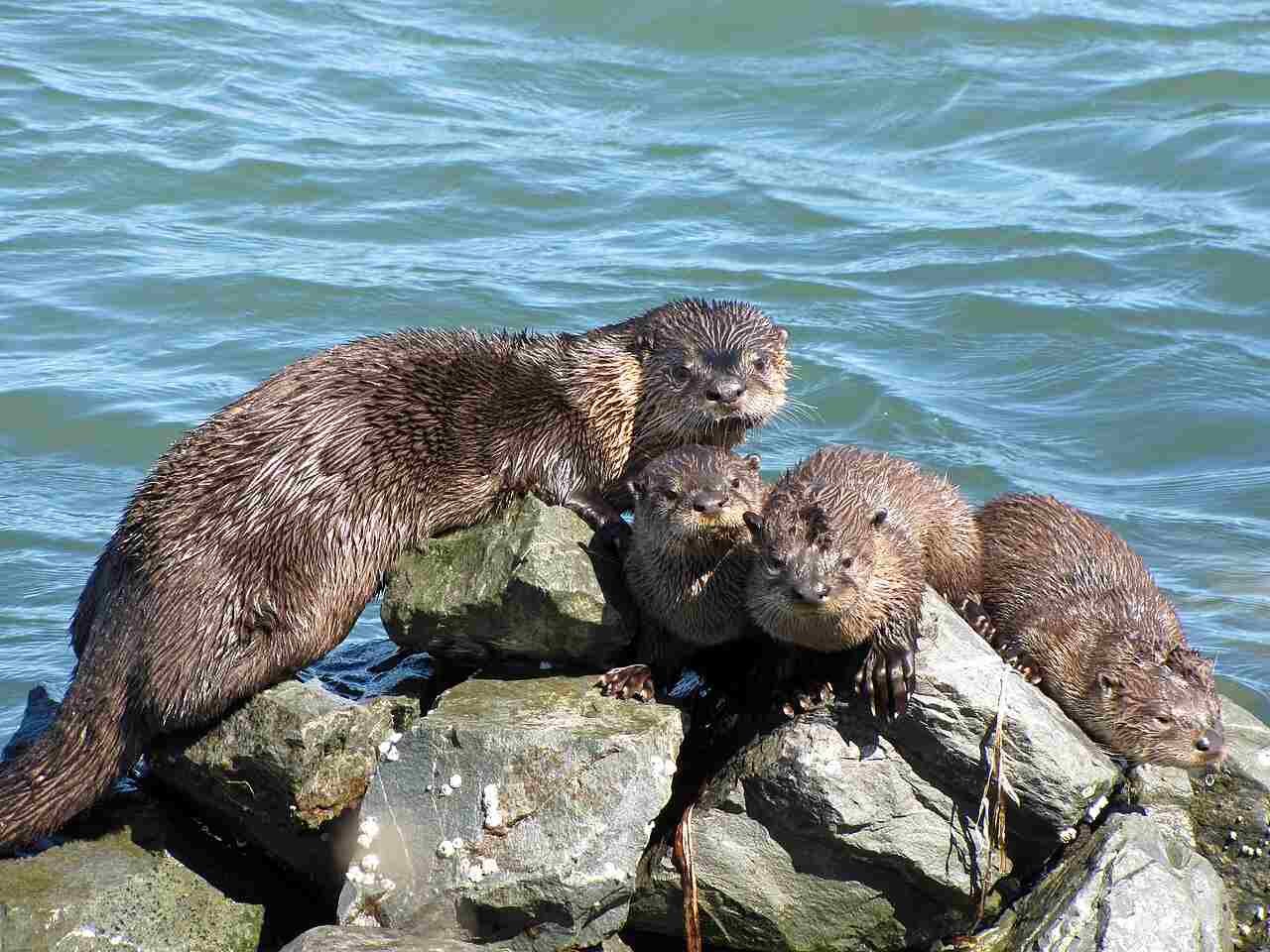
River Otter:
Generally more solitary, although family groups may form.
Playful interactions.
Sea Otter:
Often found in social groups called rafts, providing protection.
Display social behaviors, including vocalizations.
Comparison:
Sea otters are more social, forming larger groups for mutual benefits.
Ecological Implications:
Social behaviors impact their roles in ecosystem dynamics, including predator avoidance.
17. Mode of Reproduction:
River Otter:
Mating occurs throughout the year.
Gestation period of about 60 to 63 days.
Sea Otter:
Typically mate in the water, and births can occur year-round.
Longer gestation period, around 4 to 9 months depending on delayed implantation.
Comparison:
Both otters can reproduce throughout the year, but sea otters have a more extended gestation period.
Ecological Implications:
Reproductive strategies affect population dynamics and genetic diversity in their respective habitats.
18. Parental Behavior:
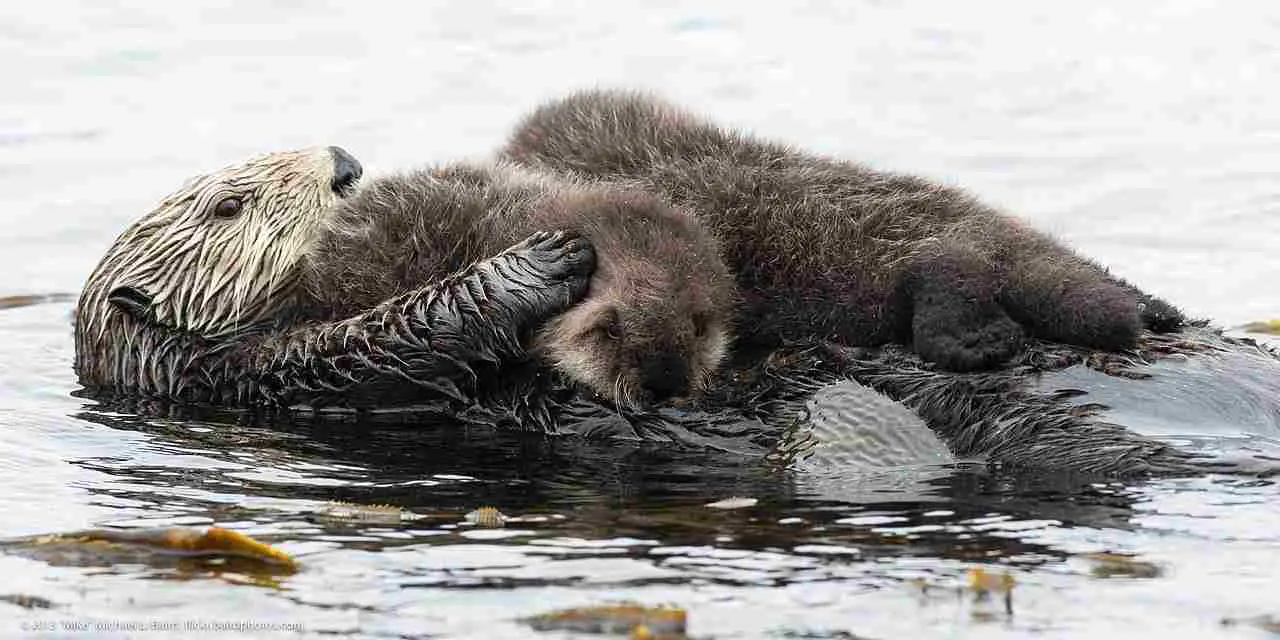
River Otter:
Female river otters raise their offspring alone.
Young otters stay with the mother for about a year, learning essential survival skills.
Sea Otter:
Females are the primary caregivers, and they may form social groups with other females.
Mothers nurture and protect their pups, teaching them how to swim and hunt.
Comparison:
Both otters exhibit maternal care, with some differences in social structure and duration of parental involvement.
Ecological Implications:
Parental behavior impacts the survival and development of otter populations, influencing ecosystem dynamics.
19. Proximity to Human-Inhabited Areas:

River Otter:
Can adapt to living in close proximity to human settlements, including urban areas.
May use man-made structures like culverts for den sites.
Sea Otter:
Generally avoids human-populated areas, preferring remote coastal environments.
Human disturbance can disrupt their behavior and lead to stress.
Comparison:
River otters display a higher tolerance for human presence compared to sea otters.
Ecological Implications:
Proximity to human-inhabited areas affects otters’ behavior, interactions, and potential conflicts.
20. Behavior Toward Humans:
River Otter:
May exhibit curiosity but generally cautious around humans.
Can become habituated to human presence.
Sea Otter:
Tends to be wary of humans and may retreat or dive when approached.
Human disturbance can negatively impact their behavior.
Comparison:
River otters may show more curiosity and adaptability to human presence than sea otters.
Ecological Implications:
Human interactions can affect otter behavior, potentially influencing their ecological roles.
21. Danger Posed to Humans:
River Otter:
Rarely pose a threat to humans.
May bite if cornered or feel threatened.
Sea Otter:
Generally not aggressive towards humans.
Avoidance behavior, but may defend themselves if provoked.
Comparison:
Both otters are not considered dangerous to humans, with aggression being a rare response.
Ecological Implications:
Low danger to humans facilitates coexistence and reduces the likelihood of human-wildlife conflicts.
22. Associated Precautions:
River Otter:
Avoid feeding or approaching them in the wild to maintain their natural behavior.
Secure garbage to prevent attracting otters to human-populated areas.
Sea Otter:
Maintain a safe distance when observing in the wild to avoid causing stress.
Follow wildlife viewing guidelines to minimize human impact.
Comparison:
Similar precautions, emphasizing the importance of minimizing human interference and maintaining natural behaviors.
Ecological Implications:
Responsible human behavior helps sustain healthy otter populations and ecosystems.
23. Conservation Status:
River Otter:
Conservation status varies by species; some are of least concern, while others may face threats.
Habitat degradation, pollution, and human activities can impact populations.
Sea Otter:
Listed as endangered or threatened in certain regions.
Vulnerable to oil spills, habitat loss, and entanglement in fishing gear.
Comparison:
Sea otters generally face a higher conservation risk compared to many river otter species.
Ecological Implications:
Conservation efforts are crucial to maintaining otter populations and preserving biodiversity in their habitats.
Summary of Comparison
Taxonomy:
River otters belong to the genus Lontra or Lutra, while sea otters are classified under the genus Enhydra.
Appearance:
River otters have a sleek, elongated body, while sea otters are stockier with a round face and small external ears.
Size:
Sea otters are generally larger than river otters, both in body length and tail length.
Weight:
Sea otters are significantly heavier than river otters.
Bite Force (PSI):
River otters may have a stronger bite force compared to sea otters.
Physical Offensive Advantages:
Both otters exhibit effective adaptations for hunting, but methods differ based on habitat.
Physical Defensive Advantages:
River otters rely on speed and agility, while sea otters use group strategies for defense.
Speed:
River otters are generally faster swimmers than sea otters.
Agility:
Both otters showcase remarkable agility, adapted to their specific environments.
Overall Physical Capacity:
River otters are versatile in various environments, while sea otters are specialized for marine life.
Habitat Preference(s):
River otters are adaptable to freshwater and coastal areas, while sea otters are exclusively marine.
Tracks:
Tracking river otters is more feasible due to their terrestrial activities.
Lifespan:
Sea otters generally have a longer lifespan than river otters.
Mode of Feeding:
Both are carnivorous, but their specific prey and hunting techniques vary.
Intelligence:
Sea otters are often regarded as more intelligent, particularly in terms of tool use.
Social Behavior:
Sea otters are more social, forming larger groups for mutual benefits.
Mode of Reproduction:
Both otters can reproduce throughout the year, but sea otters have a more extended gestation period.
Parental Behavior:
Both otters exhibit maternal care, with some differences in social structure and duration of parental involvement.
Proximity to Human-Inhabited Areas:
River otters display a higher tolerance for human presence compared to sea otters.
Behavior Toward Humans:
River otters may show more curiosity and adaptability to human presence than sea otters.
Danger Posed to Humans:
Both otters are not considered dangerous to humans, with aggression being a rare response.
Associated Precautions:
Similar precautions for both, emphasizing the importance of minimizing human interference.
Conservation Status:
Sea otters generally face a higher conservation risk compared to many river otter species.
Conclusion
I. Similarities:
Both river otters and sea otters are members of the Mustelidae family.
They share common characteristics like webbed feet and a carnivorous diet.
II. Differences:
Sea otters are adapted to marine life, while river otters inhabit both freshwater and coastal areas.
Size, weight, and ecological roles differ significantly between the two species.
Conservation status varies, with sea otters generally facing higher threats.
